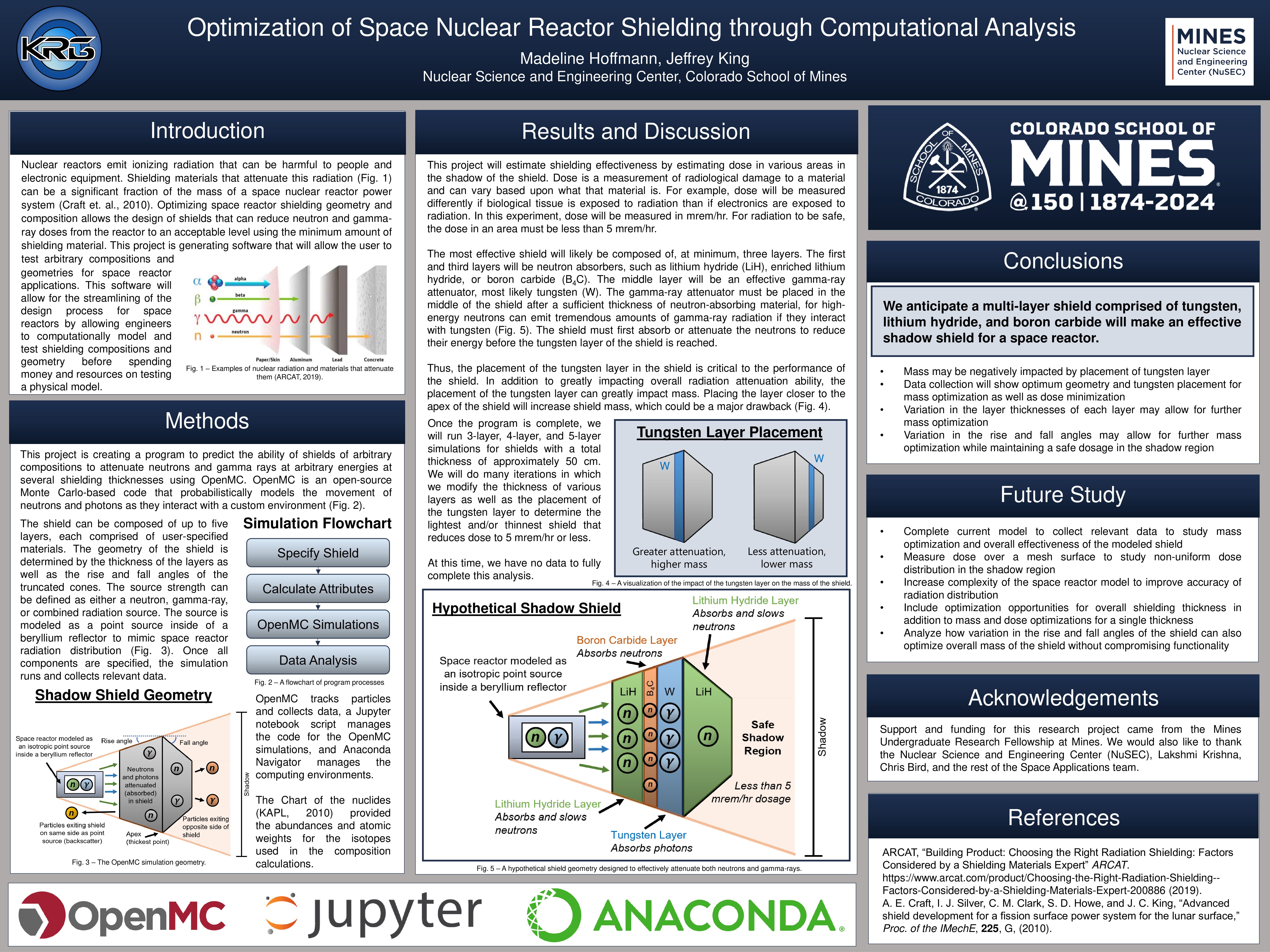Poster Presentation by Maddy Hoffmann
Sophomore, Physics
Mentor: Jeffrey King, Metallurgical & Materials Engineering
Abstract:
Nuclear reactors emit ionizing radiation that can be harmful to people and electronic equipment. Shielding materials that attenuate this radiation can be a significant fraction of the mass of a space nuclear reactor power system. Optimizing space reactor shielding geometry and composition allows the design of shields that can reduce neutron and gamma-ray doses from the reactor to an acceptable using the minimum amount of shielding material. This project generated a Python 3.10 script that uses OpenMC to test arbitrary compositions of different materials in various layers and geometries to optimize a shield for space reactor applications. OpenMC is an open-source Monte Carlo-based neutron transport code that probabilistically models the movement of neutrons and photons as they interact with a user-specified environment. When finished, the program will analyze combinations of neutron absorbers (lithium hydride, enriched lithium hydride, and boron carbide) and photon absorbers (tungsten and depleted uranium) arranged in different layers and thicknesses to determine their ability to reduce dose from a hypothetical space reactor to 5 mrem/hr at a point 10 m from the surface of the payload-side of the shield. The shield will be modeled as two opposed truncated cones with a total thickness of 50 cm. The cones will be tested with in multiple configurations to determine the optimal geometry to minimize mass while meeting the target dose. Future investigations will expand the model to include total thickness optimizations and a more detailed dose analysis over a target area.
